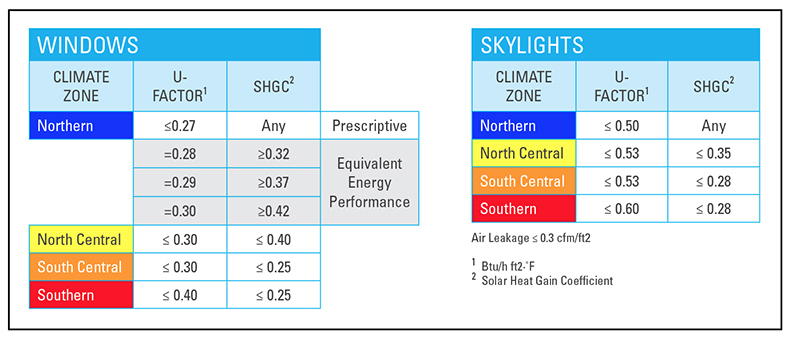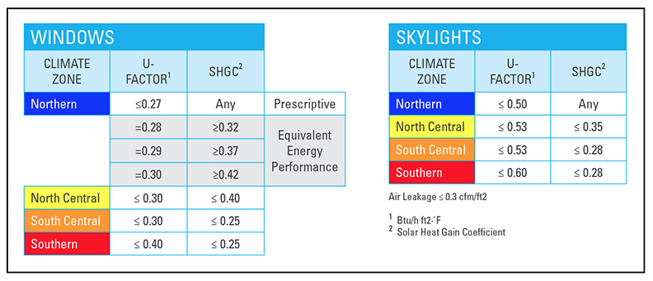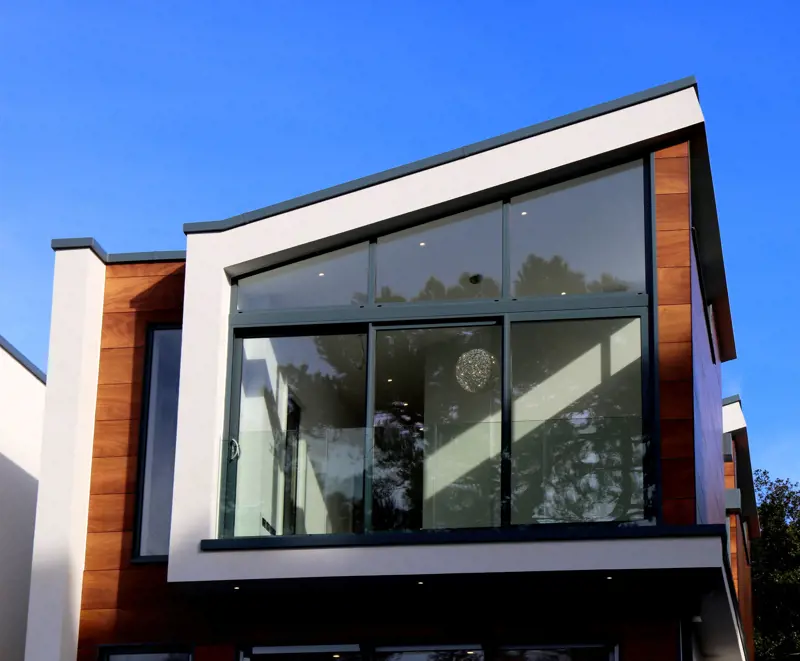
SHGC Factor for Windows Explained
Few things are worse than the brutal, scorching heat of summertime in the south. From buying fans and misters to simply staying indoors with the AC on full blast, the season seems to be a delicate balance of getting the right amount of sunlight versus avoiding it at all costs.
Windows play a huge factor in balancing heat levels inside your home. Whether you’re in the process of building a new home or looking to upgrade before Mother Nature turns the heat up, it’s important to consider the SHGC Factor for the windows you may be considering and how that rating will affect your comfort year round.
What Does SHGC Mean for Windows?
When shopping for windows, you may notice a National Fenestration Rating Council (NFRC)↗ label that shows a range of different ratings for things like U-Factor, Visible Transmittance and Air Leakage. In the top right corner of the label under Energy Performance Ratings, you’ll see a number between 0-1. That’s the Solar Heat Gain Coefficient (or SHGC Factor). This number measures the amount of solar heat that reaches a window against the amount of heat that filters through to the inside.
The best rating for your home is determined by the placement of windows (east vs west), varying low-e coatings, and the climate you live in, among other factors.

Does SHGC Need to be High or Low?
The best SHGC rating for your home is determined by the placement of windows (east vs west), varying low-e coatings, and the climate you live in, among other factors.
In warm climates, or in rooms with a tendency to overheat during the day, you’ll want to consider a lower SHGC rating (as low as 0.25 is considered good). In cooler climates, a higher SHGC rating is generally better (range of 0.42 – 0.63).
For a comprehensive look, here is the breakdown of acceptable SHGC ratings per climate zone, as indicated by the Efficient Windows Collaborative (EWC):


Discuss all of your options free of charge with a Brennan window specialist to ensure you’re getting exactly what you want for the best value. We have more than four decades of experience helping customers find the perfect window for their lifestyle and budget.
Does Window Tint Affect SHGC?
In short, yes. The tint or film on your window affects the SHGC Factor. For warmer climates, you’ll want to choose a film with a VT rating greater than the SHGC Factor. To make the best decision, divide the window VT Rating by the SHGC value. The higher the number, the more selective the film will be in filtering light in warm climates.
EWC Recommendation: If air conditioning is not a concern, look for a high SHGC (0.35-0.60) so that winter solar heat gains can offset a portion of the heating energy need. If cooling is a significant concern and no shading is available, select windows with a SHGC less than 0.32. Select skylights with a SHGC of 0.40 or less.
For more information on Solar Heat Gain Coefficient and other performance and energy ratings, review the Energy Star breakdown here↗.

In Summary…
A higher SHGC rating is generally better for cold climates, while a lower SHGC rating is generally best for warm climates. Although, there are many more factors to consider before making a purchasing decision. Talk to a specialist, and do your research.
Brennan Enterprises has helped more than 100,000 Texans improve their homes since 1979. We pride ourselves on providing products and services for every budget and style. Our staff will take care of you long after the initial project. Contact us today for a free estimate.
News, Product Reviews, and Insights
Oops!
We don't currently serve your area but do want to help you plan your project. Try our Build & Price tool to get an idea of window & door costs within DFW. Your area may be higher or lower but at least you'll have some idea of the price.
Thanks for stopping by.





